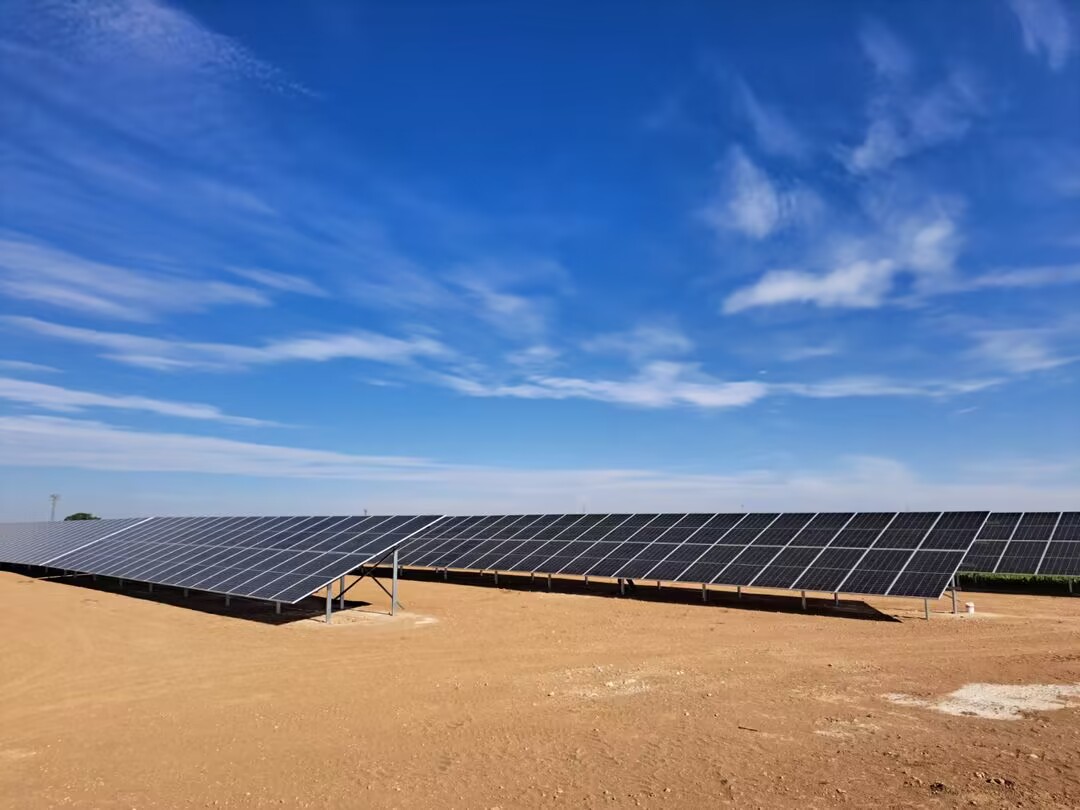When it comes to selecting the material for photovoltaic (PV) support structures, it generally adopts Q235B steel and aluminum alloy extrusion profile AL6005-T5. Each material has its advantages and considerations, and the choice depends on various factors. Let’s compare steel and aluminum for PV support structures:
1.Strength and Durability
- Steel
Due to its high strength and durability, it’s suitable for large and heavy PV arrays. It offers excellent load-bearing capacity and can withstand harsh weather conditions, including high winds and heavy snow loads. - Aluminum
Although it’s lightweight, it is still structurally robust. It has good strength-to-weight ratio and corrosion resistance, making it suitable for many PV installations.
In terms of strength, AL6005-T5 aluminum alloy is about 68%-69% of Q235 B steel. Therefore, steel is generally better than aluminum alloy in strong wind areas and relatively large spans.
2.Weight and Handling
- Steel
It is denser and heavier than aluminum, which can make it more challenging to handle and transport. It may require more labor and equipment during installation, especially for larger structures. - Aluminum
It is lightweight, making it easier to handle, transport, and install. It can be advantageous for projects where weight reduction is a priority or when there are limitations on the load-bearing capacity of the site.
Appearance and Corrosion Resistance
- Steel
It is generally hot-dip galvanized, surface sprayed, painted and so on. The appearance is worse than that of aluminum alloy profiles. While steel can be susceptible to corrosion, it can be mitigated through proper surface treatment, such as galvanization or protective coatings. With appropriate corrosion protection, steel also can have relatived long-term durability. - Aluminum
There are many surface treatment methods for aluminum alloy profiles, such as anodizing, chemical polishing, fluorocarbon spraying, electrophoretic painting, etc. The appearance is beautiful and can adapt to various environments with strong corrosion.Aluminum naturally forms a protective oxide layer, providing inherent corrosion resistance. It does not require additional surface treatment. This characteristic makes aluminum a suitable choice for PV installations in coastal areas or locations with high humidity.
At present, the main anti-corrosion method of the bracket is hot-dip galvanized steel with a thickness of 55-80 μm, and aluminum alloy with anodic oxidation with a thickness of 5-10 μm.
Under normal conditions (C1-C4 environments), 80μm galvanized thickness can ensure the use of steel for more than 20 years, but in high-humidity industrial areas or high-salinity seashores or even temperate seawater, the corrosion speed is accelerated, and the galvanized amount needs to be 100μm. above and requires regular annual maintenance. So aluminum alloys are far superior to steel in terms of corrosion resistance.
Cost
- Steel
It tends to have a lower material cost compared to aluminum. However, installation costs can be higher due to its weight and the need for heavier equipment and more labor. - Aluminum
It is generally more expensive than steel. However, its lightweight nature can help reduce transportation costs and installation time, potentially offsetting the higher material cost.
Sustainability
- Steel
It is recyclable, making it an environmentally friendly option. It can be easily recycled at the end of its lifespan and used for other applications. - Aluminum
It is also recyclable, and the recycling process requires significantly less energy compared to producing virgin aluminum. This makes aluminum a sustainable choice.
But the maintenance cost of the steel structure increases by 3% per year, while the support of the aluminum structure hardly requires any maintenance and maintenance, and the recovery rate of aluminum is still 65% after 30 years, and the price of aluminum is expected to increase by 3% per year.
Section diversity
- Steel
It is generally rolled, cast, bent, stamped and so on. Rolling is currently the mainstream production method for cold-formed steel. The section needs to be adjusted by the rolling wheel set, but after the general machine is finalized, it can only produce similar products, and the size can be adjusted, but the section shape cannot be changed, such as C-shaped steel, Z-shaped steel and other sections. The rolling production method is relatively fixed, and the production speed is relatively fast. - Aluminum
The general processing methods of aluminum alloy profiles include extrusion, casting, bending, stamping and other methods. Extrusion production is the current mainstream production method. By opening the extrusion die, it is possible to produce any cross-section profile, and the production speed is relatively fast.
In this case, Here is comprehensive performance comparison
1) The steel has high strength and small deflection deformation under load. It is generally used in ordinary power stations or for components with relatively large forces.
2) Aluminum alloy profiles are light in weight, beautiful in appearance, and excellent in corrosion resistance. They are generally used in household roof power stations and strong corrosion environments that require load-bearing.
Ultimately, the selection of steel or aluminum for PV support structures depends on project-specific factors such as the size of the installation, load requirements, budget, site conditions (e.g., wind and snow loads, corrosive environments), and sustainability goals. Welcome to consult with our structural engineer to evaluate these factors and determine the most suitable material for your specific project.
















